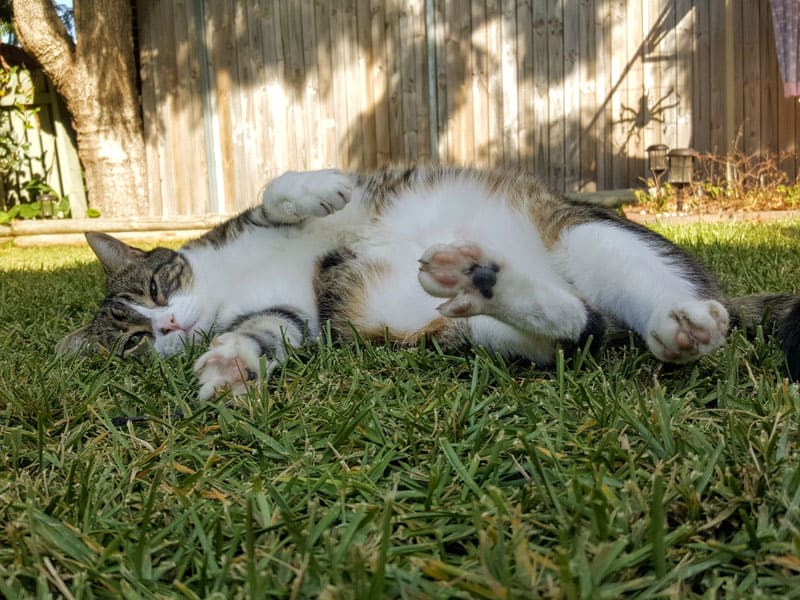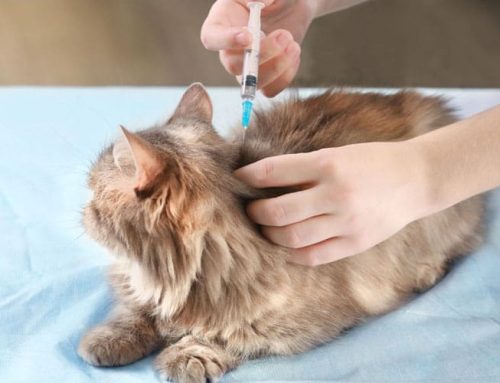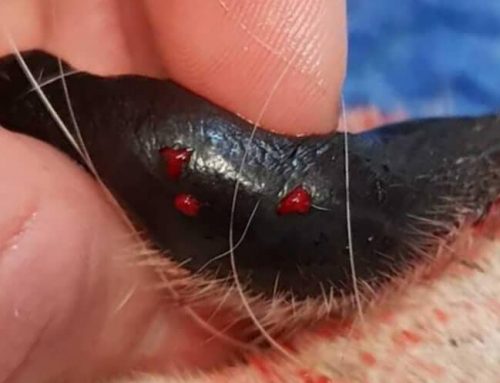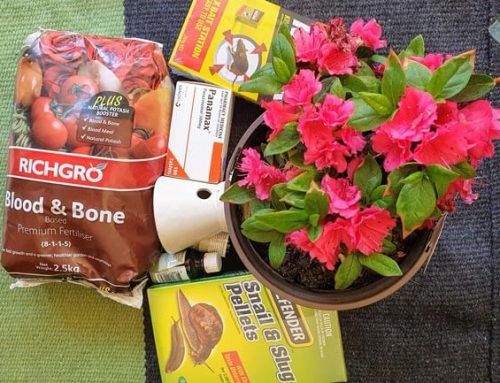Feline Infectious Peritonitis (FIP) It’s Not A Death Sentence
[easy-social-share]
Feline infectious peritonitis (FIP) is a serious and often fatal viral disease that affects cats and is caused by certain strains of the feline coronavirus (FCoV) family.
While most cats that become infected with FCoV mount a good immune response and eliminate the virus, others will go on to develop FIP.
FIP is a systemic vasculitis that mainly affects the young, with over 70% of cases being 1yr old or less. This however doesn’t mean that older cats cannot develop FIP.
While FIP is a complex and poorly understood disease and can be difficult to diagnose and treat, not all hope is lost with new treatment options available today.
Read on to learn more about FIP, how it is caught, signs, treatments and prevention.

What Are The Signs Of FIP In A Cat?
Cats with FIP may exhibit a range of signs that will vary depending on the form of the disease and the severity of the infection.
There are two forms of FIP:
- Effusive ‘wet’ FIP
- Non-effusive ‘dry’ FIP
Effusive ‘Wet’ FIP
Cats with wet FIP typically have fluid accumulation in the abdomen (ascites) or chest (pericardial or pleural effusion) which can cause abnormal abdominal swelling and breathing difficulties.
Often cats will have a fever, loss of appetite, weight loss and lethargy.
Wet FIP is often more severe and has a poorer prognosis than dry FIP.
Non-effusive ‘Dry’ FIP
Cats with dry FIP typically have chronic pyogranulomatous inflammation in various organs such as the liver, spleen or kidneys.
They too will often have a fever, loss of appetite, weight loss and lethargy.
Dry FIP may also progress to wet FIP over time.
How Is FIP Diagnosed?
FIP can be challenging to diagnose as the signs and symptoms of the disease are often non-specific and may resemble other feline diseases.
There are currently no specific tests to diagnose FIP in an alive cat, with a definitive diagnosis of FIP only made possible through post-mortem autopsy examination of tissue samples.
This of course is not particularly helpful.
As such, there is no FIP Test and any antibody titre test to check for exposure to FCoV will not be useful in the diagnosis of FIP as a positive titre does not mean the cat has FIP.
However, there are tests that if positive have a high probability that the cause is FIP.
To diagnose FIP, your veterinarian will consider your cat’s medical history, physical examination findings and laboratory test results.
Radiographs (xrays) and ultrasonography are often utilised to help rule out other possible causes of the signs your cat is showing.
The most common blood lab test results that indicate that FIP is a possibility include:
Hyperglobulinaemia – high globulin count with an Albumin:Globulin ration >0.8.
Bilirubinaemia
Lymphopenia (more often seen in cats with effusion)
Neutrophilia
Non-regenerative anaemia
Analysis of fluid effusions will show:
High protein content often greater than 35g/L
Cytology will often show macrophages and neutrophils (pyogranulomatous inflammation).
Immunocytochemistry of the effusion fluid can detect FCoV within monocytes and macrophages. If these virus particles are found it means the cat has FIP, however not all samples will contain the viral antigen so a negative result doesn’t necessarily rule out a diagnosis of FIP.
RT-PCR of the effusion fluid is occasionally used to test for FIP however this is not a preferred test in Australia.
Often vets will utilise a quick, cheap in-clinic test called the Rivalta’s test on effusions.
The Rivalta’s test has a good sensitivity for FIP at 91-100% which means that if it is negative, then the likelihood of the cat having another disease causing the effusion is much more likely than it being caused by FIP.
A positive result could indicate another disease process that produces a high protein count such as lymphoma or peritonitis/pleuritis, however, these diseases can be easily diagnosed by cytology and culture.
Ultrasound is often performed to assess for fluid accumulation and the presence of abnormal lesions in organs and lymph nodes.
A fine needle aspiration (FNA) can easily be performed to gather cells for further testing.
What Is The Treatment For FIP?
In recent years a treatment for FIP has been discovered and what was once a death sentence for cats prior to 2019, there is now hope.
Dr Niels Pedersen of UC Davis has been instrumental in the vast amount of research on FIP in cats over the past 40-plus years and along with colleagues discovered that GS-441514 the active ingredient in Remdesivir was able to cure infected cats.
Since the work in 2019 that discovered this medication, thousands of cats with FIP from around the world have been treated with a cure rate of just over 90% (1. Jones et al.,2021).
Remdesivir is an antiviral medication that was initially developed for the treatment of Ebola virus disease in humans.
It is important to note that the use of remdesivir for the treatment of FIP in cats is considered off-label as the drug is not currently approved for use in cats in either Australia (APVMA) or the US (FDA).
Because it is a human product, your vet will be able to write a script for the medication for use in your cat.
It’s also important to note that in the case of treating kittens, they will grow over the treatment period, therefore dosage will need to be increased accordingly.
In the early days, and during the initial stages of medicating with Remdesivir, treatment of FIP is supportive in nature.
Medications are given that support organ function and minimise adverse signs.
Fluid therapy is often required to help maintain hydration and electrolyte balance.
Sadly, the cost of treating a cat with FIP does not come cheaply.
Recommended Treatment Regime With Remdesivir For FIP
Current dose recommendations for treatment with remdesivir:
Effusive ‘wet’ FIP
10mg/kg once daily by subcutaneous injection
Non-effusive ‘dry’ FIP
15mg/kg once daily by subcutaneous injection
Ocular FIP
12mg/kg once daily by subcutaneous injection
Current Cost Of Remdesivir Treatment Of FIP In Australia (2022)
100mg vial costs $99 plus tax.
The cost to treat a 2.5kg cat with effusive FIP (remember most cats are young and light) for 84 days with remdesivir (25mg per day or 2.5ml) will require approximately 21 vials @ $99/vial. The full medication will cost approximately $2000 plus tax.
This does not include initial diagnostics or any supportive care such as fluids that might be required in the initial stages.
Recommended Treatment Regime With GS-441524 For FIP
Current dose recommendations for treatment with GS-441524:
Effusive ‘wet’ FIP
8-10mg/kg once daily orally
Non-effusive ‘dry’ FIP
12-15mg/kg once daily orally
Ocular FIP
12mg/kg once daily orally
Current Cost Of GS-441524 Tablets For FIP Treatment (2022)
In Australia, the tablets come with a 50mg concentration.
The cost is currently $600 for 10 x 50mg tablets.
The cost to treat a 2.5kg cat with effusive FIP for 12 weeks with GS-441524 (25mg per day or HALF a 50mg tablet) requires approximately 42 tablets at a cost of approximately $2500.
The optimum treatment period has been found to be 84 days, that said, some cats will be cured earlier, likewise – some later.
The decision to stop treatment is based on a full return to clinical health including normal blood test values.
Most treatment failures occur when treatment is stopped prematurely.
There does not appear to be any difference between success rates in those cats with wet or dry FIP that don’t have ocular or neurological involvement.
In those cats with ocular or neurological forms, the success rate was lower at 80% and 76% respectively. (FIP Warriors data).
It is pleasing to note that the long-term success of treatment is positive with few relapses or recurrences of FIP. (2. FIP Warriors data).
How Is FIP Transmitted Between Cats?
It appears that cats that live in high-density situations such as shelters, catteries and breeding colonies are the most susceptible to infection with FCoV as are purebred cats, males and geriatric cats.
The most common mode of transmission occurs between an infected Queen and her kittens when they are about 5-8 weeks of age.
The virus is quite contagious and is easily passed from an infected cat to other cats via faeces and saliva.
Remember though, that whilst most cats may become infected easily, only a small percentage will go on to develop FIP when the FCoV mutates.
FIP virus (the mutated form) is not passed in faeces.
Can Feline Coronavirus Be Prevented?
While there is a vaccination available for feline coronavirus it is not recommended due to lack of efficacy for a couple of reasons:
- It is licensed for use for kittens from 16 weeks of age – as mentioned earlier most cats are infected between the ages of 5 and 8 weeks.
- It also contains a serotype II strain of the FIP virus whereas Serotype I FIP virus is the predominate strain of the virus found in the environment.
However, there are several steps you can take to help prevent the spread of feline coronavirus in cats:
- Keeping your cats up to date on their vaccinations for other diseases such as the feline leukaemia vaccine (FeLV) can ensure a robust immune system and help reduce the risk of infection.
- Practice good hygiene: clean and disinfect any surfaces or objects that may have come into contact with cats.
- Keep litter boxes clean and locate them away from food and water dishes.
- Limit your cat’s exposure to other cats – particularly wild cats. Keep inside.
- Create a low-stress environment – FIP is more common in cats that live in crowded or stressful environments.
- Use caution when introducing new cats to your household. Make sure that they are healthy before introducing them to your cats.
Can Other Animals Or Humans Become Infected With Feline Coronavirus?
Infection with FCoV is limited to cats, other animals and humans cannot get sick from feline coronavirus.
Feline coronavirus is not implicated in SARS or Covid-19, human diseases also caused by a coronavirus.
References
- Jones S, Novicoff W, Nadeau J, Evans S, 2021. Unlicensed GS-441524-like antiviral therapy can be effective for at-home treatment of feline infectious peritonitis. Animals 11, 2257.
- FIP Treatment – Czechia /Slovakia. Basic data, 2022. https://docs.google.com/spreadsheets/d/e/2PACX-1vRAnj_FV_fteWIW1HXsROLuJ7YY1i_Sf81BCmM9JT9LbCT2mcnwD1rL9IBsLCTB1U59CcnalOGjFqq/pubhtml?gid=1340189982&single=true (Accessed 4 April2022).





Leave A Comment